This year at Furry Fiesta 2013 our team tested out its first entirely online survey. In terms of logistics (and not to mention the environment!) it was successful, resulting in a sample of 455 furries in total, half of which signed up to complete the the survey as part of our team’s multiple-year longitudinal study, which aims to investigate changes in individual furries as a result of spending time in the furry fandom.
The study replicated many of our past findings and, as such, will not be presented below. Instead, the data below, for the most part, represent a combination of:
a) findings which extend our team’s previous research in the furry fandom (e.g., fantasy use, inter-group relations), and
b) findings that look at new questions posed by furries regarding the furry fandom.
Of the nearly 250 questions asked, a summary of the most interesting data are presented below.
As always, if you have any questions or would like clarification of the data here, or would like to suggest an analysis/test a hypothesis, please contact us (see link on the sidebar).
Please note that all collected information is presented here in aggregate (summarzied) form, and there is absolutely NO identifying information in the data. We have no way of tracing responses back to the original participant (this is an anonymous survey). Additionally, any unique responses (e.g. species types selected by only one person) are not reported, to protect the anonymity of the participants.
Additionally, summary statistics and the output of different analyses are included in this presentation of the data (e.g. t-tests, ANOVAs, regression analyses, means). They are always in brackets, and are always summarized just prior to their presentation. It is not necessary to understand them, but are included for the sake of anyone with a knack for stats or who wants to know a little more about the technical side of the research.
Summary of questions:
Demographics
Q1: How much of the furry fandom is therian? Otherkin? Brony? Human?
Q2: Has the gender composition of the fandom changed?
Q3: What is the relationship status of the average furry?
Q4: What are the living accommodations of the average furry?
Q5: Does the average furry have a full-time job?
Q6: How much post-secondary education does the average furry have?
Q7: What is the political orientation of the average furry?
Q8: Do almost all furries own pets?
Fantasy Engagement
Q9: How much fantasy do furries engage in?
a. Why do furries engage in fantasy?
b. Is fantasy engagement healthy in furries?
Intergroup Interaction
Q10: How do furries and bronies view one another?
Furries and Pornography
Q11: How many furries view furry-themed pornography, and are there gender differences?
Q12: How positive or negative is the average furry’s feelings toward furry (and non-furry) pornography?
Q13: Does pornography draw people into the furry fandom?
Q14: Do furries prefer pornographic or non-pornographic artwork?
Q15: Why should we care about differences between males and females when it comes to pornography within the fandom?
Q16: How does furry sexual behavior manifest itself?
Just for fun: A word from Nuka on the creativity of furries.
Demographics
Q1: How much of the furry fandom is therian? Otherkin? Brony? Human?
As in previous surveys, we asked our participants to indicate the extent to which they identified themselves as any or all of a number of different fandom-related categories. New to this survey, we asked participants whether or not they self-identified as human as well.
As you can see from the table above, our sample was almost entirely furry. Additionally, the data seem relatively comparable to previous surveys, where we typically find that about one in five furries self-identifies as a therian, defined, for our purposes, as people who identify as a member of a particular species of animal, be it physically, spiritually, or psychologically. Additionally, in line with our previous work, about 20-25% of furries also self-identify as a brony, that is, a fan of the popular television show My Little Pony: Friendship is Magic. Finally, interestingly enough, 65% of our sample checked the “human” option. A simple t-test revealed that while 69.5% of non-therians checked the human box, only 43.9% of therians checked the box, a difference which was statistically significant, t(77.2) = 3.56, p = .001. This is what we would expect to find, where therians are more likely to identify as members of non-human animal species, and less likely to self-identify as humans. It is puzzling to the researchers, nonetheless, why only 30.5% of non-therians failed to check the human box. One possibility is that many people who endorse therianthropic ideas are unaware of the term or its meaning and, if they knew what the term meant, would likely self-identify as therians. Indeed, it has been the experience of the researchers that, after presenting data about therians, individuals have approached the researchers to inform them that they “were therian without knowing it”. Further research, along with refinement of our measures, may help to clarify this unexpected finding.
Q2: Has the gender composition of the fandom changed?
For the most part, no. As with our past samples, the fandom is predominantly male, with 77.9% of our participants identifying as biologically male, 17.5% identifying as biologically female, and 3.6% identifying as transgender (with 1% identifying as “other”).
These data are mentioned here because, later on in this summary, differences in the results of males and females are discussed at length.
Q3: What is the relationship status of the average furry?
As you can see from the figure above, the majority of furries in the fandom self-identify as male, a finding that, in itself, is quite consistent with our past research. New to this year, however, is our addition of the option “Master/Pet Relationship”, which, as seen above, revealed that approximately 6.5% of furries consider themselves to be in a master/pet relationship with someone else. Whether or not such relationships exist outside currently existing relationships, whether or not they are sexual or asexual in nature, or whether they serve other important psychological or relational needs is a possible topic for future research.
Q4: What are the living accommodations of the average furry?
A new question for the survey this year, we can see that nearly half of the furries in our sample lived with their parents, while another 30% or so lived with a friend or significant other. 15% of furries live alone, while the rest report alternate living conditions. We believe that the high proportion of furries living with their parents is the product of two factors: the fact that the average furry is in their early 20s, and the fact that many furries attend post-secondary educational institutions, which may necessitate living with their parents for financial reasons. Indeed, as the figures below demonstrate, when the data are split up to independently consider furries in their mid-twenties and older, as compared to furries in their late teens and early twenties, age seems to be one of the important determining factors of this effect, and as furries mature and become married or find a romantic partner, they move away from their parents and into their own homes.
Q5: Does the average furry have a full-time job?
We asked furry participants to indicate their current employment situation. As can be seen from the above figure, more than half of the furry fandom works either part time or full time, while nearly half reports attending post-secondary school at least part-time. Approximately one third of furries indicated that they were not currently employed, in part due to a lack of searching, disability, or other factors (such as being a homemaker or travelling, or a leave of absence). About one fifth of furries is currently unemployed and in the process of looking for a job.
As an interesting follow-up, we also asked furries to indicate their satisfaction with their current employment status. As you can see from the job below, while there is tremendous variability on furries’ job satisfaction, furries do, on average, seem to enjoy their current employment.
Q6: How much post-secondary education does the average furry have?
In the past, we have asked furries to indicate their highest level of education, the results of which consistently indicate that the average furry self-reports having “some” post-secondary education. To investigate this further, we asked furries to indicate, if they had attended/ were currently attending a post-secondary institute, to indicate how many years they had spent there. The data are plotted in the figure below.
As you can see, nearly a quarter of furries who indicated some degree of post-secondary education have received at least four years of education, suggesting a bachelor’s degree. Just as interesting, nearly a quarter of furries with post-secondary education report 6 or more years of education (which may indicate either taking longer to complete one’s bachelor degree or the pursuit of a follow-up graduate degree). In light of these findings, future work will likely attempt to disambiguate those furries still currently pursuing higher education (and those doing so within the planned timelines for their programs) from those who may be struggling to complete their post-secondary education (or who may be simply at the start of their degree).
Q7: What is the political orientation of the average furry?
In the past we’ve asked furries about their political orientation. However, in such questions we failed to make an important distinction: while we did ask participants to indicate the extent to which they considered themselves to be conservative, moderate, or liberal, we failed to distinguish between two very important and largely unrelated dimension: social orientation and economic orientation.
Social orientation refers to one’s stands with regard to social policies: this can pertain to issues as broad as same-sex marriage, immigration, religious issues, abortion, etc…
In contrast, economic orientation refers to one’s stance regarding economic policies: this can pertain to spending issues such as privatized health care, military spending, and welfare/social security, to name just a few.
It should be noted that, while somewhat related, social and economic orientation are independent constructs, and it is entirely possible for a person to adhere to conservative social policies (e.g. pro-life) while simultaneously adhering to liberal economic policies (e.g. public health care), and vice-versa.
“Political” is more general, and may refer to whether people tend to identify their political stance, as a whole, as being more liberal or conservative, or it may refer to their tendency to identify with a more conservative or liberal party.
It should be noted that for “political”, “social”, and “economic” orientation, we did not provide examples of issues relevant to each of these dimensions, nor did we impose definitions on participants, instead allowing them to decide for themselves what the terms meant.
As you can see from the image, furries, as a group, define themselves as quite socially liberal (M = 6.03; red bars), a finding not surprising given the diversity and inclusiveness of the furry fandom when it comes to sexual orientation and on issues of gender identity; it may also be a product of the relatively young composition of the furry fandom.
Economically, however, furries reported a much more moderate position (M = 4.93; green bars). Analysis reveals that furries were statistically significantly more conservative when it came to economic issues than they were when it came to social issues, F(1,273) = 96.12, p < .001.
Political orientation more generally, as expected, fell between economic and social orientation, and is likely a composite of the two (M = 5.56).
Future research on this subject may delve into the subject of furry identification with libertarianism, though it may be difficult to study this as many furries may be unfamiliar with the term and its meaning.
Q8: Do almost all furries own pets?
In our past work we have asked furries whether or not they have ever owned a pet, the result of which suggested that the vast majority of furries have owned a pet at one time or another (it should also be noted that this does not differ significantly from the experience of the general population in North America).
This time, we asked participants to indicate the number of pets they currently owned.
Interestingly (and unexpectedly), nearly one-third of furries reported that they did not currently own a pet, while nearly half of furries said that they owned one or two pets.
It would be worth looking, in future research, at the extent to which furries want to own a pet; these numbers might help to explain some of the third of furries who do not currently own pets, distinguishing those who genuinely do not wish to own a pet from those who, while wanting a pet, may be unable to do so due to their current living conditions (for example, given that so many furries under the age of 24 currently live with their parents, they may not be able to own a pet due to their parents’ rules; another possibility is that living in an apartment or townhouse may limit the ability to own a pet).
Fantasy Engagement
Q9: How much fantasy do furries engage in?
Past psychological research suggests that fantasy engagement is pretty universal, and that the average person has a surprisingly active fantasy life, whether it manifests itself as daydreaming, engaging with fantasy-themed media (e.g. books, movies, shows), indulging in sexual fantasies, or acts of role-taking, role-playing, and entertaining hypothetical situations.
Preliminary data from previous surveys have suggested, however, that even so, furries tend to have a more active fantasy life, even after controlling for demographic differences such as age and gender.
In this current study, we attempted to further our look at furries and fantasy engagement by looking more specifically at the functions that fantasy activities fulfill for many furries.a.
a. Why do furries engage in fantasy?
Participants were asked to take a few moments to think about the different ways that they engage in fantasy activity (this would be in addition to their furry fantasy activities). They were then asked to indicate the extent to which they engaged in fantasy for each of a number of different reasons. We analyzed these data by looking at how identifying as a furry predicted the functions that fantasy served for furries (in other words, asking whether “casual furries” were different in the reasons that they engaged in fantasy from furries for whom being furry was a fundamental part of their identity).
- The more “furry” a person was, the more they tended to use fantasy for recreational purposes (B = .22, p < .001)
- The more “furry” a person was, the more they tended to use fantasy to fulfill some currently unfulfilled need in their life (B = .19, p = .001)
- The more “furry” a person was, the more they tended to use fantasy to express some part of themselves (B = .32, p < .001)
- The more “furry” a person was, the more they tended to use fantasy as a means of motivating themselves (B = .23, p < .001)
- The more “furry” a person was, the more they tended to use fantasy as a means of coping with setbacks and failures (B = .17, p = .006)
- The more “furry” a person was, the more they tended to use fantasy as a means of escapism from the real world (B = .17, p = .005)
- Being furry did NOT significantly predict the use of fantasy for social reasons (B = .10, p = .098)
Taken together, these data suggest that for furries, fantasy fulfills a wide variety of psychological functions, and that, in particular, being “more furry”, and engaging more frequently in fantasy activities (as found in past research) is associated with the use of fantasy for many different functions in day-to-day life.
b. Is fantasy engagement healthy in furries?
While furries are more likely to engage in fantasy, it can be asked whether or not this fantasy engagement is necessarily healthy. While our past research has suggested that being a furry is more likely to be associated with more “healthy” fantasy engagement than pathological fantasy engagement, we nonetheless tried to better understand this relationship by asking participants to indicate the extent to which they engaged in fantasy as the ONLY way to fulfill these various needs, whether, when engaging in fantasy, they lost the ability to distinguish fantasy from reality, and whether their use of fantasy had become a problem for them.
- The more “furry” a person was, the more they tended to use fantasy as the ONLY way to fulfill some of those functions, in particular self-expression (B = .14, p = .018) and escapism (B = .19, p = .002). Put another way, the more furry you were, the more likely it is that fantasy was the only way to express yourself or to escape from the world.
- Interestingly, being more “furry” did NOT predict fantasy as the ONLY way to have fun, fulfill needs, engage in social interaction, motivate oneself, or cope with problems. Put another way, furries seem to have a diverse set of ways of fulfilling these functions.
- Being furry did NOT significantly predict the blurring of fantasy and reality (B = .07, p = .46), suggesting that while furries may be more likely to engage in fantasy, they are NOT more likely to be delusional or confuse fantasy for reality.
- Being furry did NOT significantly predict problematic fantasy use (B = -.04, p = .64), suggesting that while furries may engage in more fantasy, it seems to be a source of positivity for them, fulfilling a number of important psychological functions without causing significant problems in terms of their life satisfaction.
Intergroup Interaction
Q10: How do furries and bronies view one another?
As we’ve found in previous surveys and in the current survey, approximately 20-25% of the furry fandom self-identifies as “brony”. Interestingly, while related to the furry fandom, the brony fandom is also an independent fandom, with many bronies not identifying with the furry fandom. As a result of this, psychological theories (e.g., social identity theory) would predict that because of many of their similar features (e.g. anthropomorphic characters, 18-25 year old male composition, open and tolerant philosophies), bronies and furries may find themselves at odds with one another. This is because the labels of “furry” and “brony” are different, and felt to be meaningful for both furries and bronies. In order to exist as distinct and separate from one another, the two groups may become polarized, amplifying relatively small differences between the fandom and showing disapproval or aggression toward the other group. Some of this has been seen in our previous work.
In replicating our previous work, we asked furries who were also bronies and non-brony furries to indicate their feelings toward furries, bronies, and non-furries (as a comparison group).
Blue bars represent how non-brony furries rated each of the three groups, while red bars represent how furries who were also bronies rated each of the three groups.
Bronies and furries did NOT differ with regard to how positively they rated furries and non-furries (both p >.20). However, they did differ with regard to how they rated bronies, with bronies, perhaps unsurprisingly, rating bronies, as a group, more positively than non-brony furries did, t(302) = -6.14, p < .001.
We also find, unsurprisingly, that both furries and bronies rate furries, as a group, higher than non-furries. What’s interesting, however, is how furries and bronies differ in their relative weighting of bronies compared to non-furries. Bronies, again unsurprisingly, rated bronies significantly more positively than the average non-furry, t(63) = 3.97, p < .001. Furries, however, actually rated bronies significantly more negative than non-furries, t(238) = -5.60, p < .001.
In other words, even though, for non-brony furries, both “bronies” and “non-furries” represented members of their outgroup (that is, groups that they don’t belong to), bronies were rated particularly negatively, relatively speaking. This provides evidence to support the claim that non-brony furries may feel particular malice for bronies because they are, at some level, somewhat comparable to the furry fandom. Future research may help us to support this hypothesized mechanism.
Two other observations were noticed (not in the figure above), but both representing positive biases in the way we view the groups to which we belong:
- Compared to non-brony furries, bronies thought the average person would view bronies more positively than non-brony furries did (Bronies = 33.1, Furries = 24.9, t(301) = -3.65, p < .001). Put another way, while both bronies and non-brony furries thought that the average person wouldn’t have a very high opinion of bronies, bronies predicted that the average person would rate bronies almost 10 points higher than the average furry predicted they would.
- In a similar vein, when asked how positively they thought the average brony felt about the average non-furry, bronies estimated that the average brony would be more positive than non-brony furries did (Bronies: 58.6; Furries: 52.0, t(304) = -2.62, p =.009). This may represent another bias, whereby bronies believe that other bronies are more positive towards others in general, a bias which non-brony furries are less likely to share.
Furries and Pornography
Much has been made about the subject of pornography within the furry fandom. Whether it’s media outlets trying to portray furries as sexual deviants, or movements within the furry fandom to deny or abolish pornographic content within the fandom.
As a preface to the data below, the researchers emphasize an important statement about the fandom: the furry fandom is comprised primarily of males, ages 18-25. Research on the psychology of sex indicates that this is a population that, furry or not, demonstrates tremendous interest in sex, whether it’s thinking about sex, engaging in sexual activities, or exposing itself to sexual content (e.g. pornography). It should be pointed out that nothing about “furry” is, in and of itself, sexual, any more than an interest in cars, comic books, or computers is inherently sexual. Rather, it is the belief of the researchers that one’s naturally-occurring sexuality tends to manifest itself in one’s interests and hobbies: if a person’s interest is in vehicles, it may manifest as pin-up girls on the cover of car magazines. If a person’s interest lay in comic books, sexuality may manifest in overly sexualized characters in comic books and their respective artwork. In much the same fashion, we believe that sexual content within the furry fandom follows the same pattern.
As a result of this longstanding issue within the fandom, we’ve asked a number of questions pertaining to furries and their interest in/ use of pornography. The data which follow are presented in as value-neutral a way as possible, and in no way are intended to be value judgments about the fandom or statements about what the fandom ought to be. They are merely data from furries regarding this often-asked-about but infrequently studied aspect of the fandom.
Q11: How many furries view furry-themed pornography, and are there gender differences?
To begin, we asked participants to do three things: predict what percentage of MALE furries looked at pornography, to predict what percentage of FEMALE furries looked at pornography, and then to indicate whether they, themselves, looked at furry pornography. The data are presented in the table below, with the guesses from both male and female participants provided.
First of all, as you can see from the bottom row, male furries are significantly more likely to view furry pornography than female furries, t(49.0) = -2.87, p = .006. Additionally, neither males nor females were more accurate in predicting the proportion of males/females in the fandom who view furry pornography. Finally, furriesunderestimated both the number of males in the fandom who view furry pornography and the number of females within the fandom who view furry pornography.
Q12: How positive or negative is the average furry’s feelings toward furry (and non-furry) pornography?
To elaborate on the question of pornography in the furry fandom, we asked furries to estimate the attitudes of male (blue bars) and female (red bar) furries in the fandom toward pornography (males and females did not significantly differ in their estimates, and so their estimates are presented together).
As you can see from the above figure, males were estimated to have a more positive attitude toward furry pornography than females, though it should be noted that both males and females were estimated to have a relatively positive attitude toward pornography within the fandom (mixed to positive).
In the figure below, we asked male and female furries to indicate how positively or negatively THEY felt about furry pornography (blue bars = male participants, red bars = female participants).
A very different trend emerges; males’ attitudes toward furry pornography are significantly more positive than females’ attitudes (Males = 5.37, Females = 4.26, t(261) = 4.40, p < .001). Importantly, females, far from being quite positive in their attitudes toward furry pornography as estimated in the figure above, have very mixed feelings toward pornography in the fandom, with nearly half of females reporting mixed feelings, and nearly as many females opposing pornography as supporting it.
We then asked furries to indicate their attitudes toward NON-FURRY pornography.
Male and female scores did not significantly differ, and so they are aggregated here. The results suggest that more than a third of furries have relatively negative attitudes toward non-furry pornography, and only about a quarter of furries feel quite positively toward it. These data may suggest that for many furries, if they do use pornography, it may be limited to furry pornography. Another question asked male and female furries to indicate the extent to which the pornography they viewed (if they viewed it at all) was limited exclusively to furry pornography: male furries reported that the pornography they viewed was significantly more likely to be furry-themed than females (Males: 4.82, Female: 3.19, t(242) = 4.97, p < .001). In fact, while 17.1% of males said that they viewed exclusive or near-exclusively furry pornography, only 2.2% of females said that was the case. In contrast, 41.0% of males furries said that their pornography usage was definitely not exclusive to furries, while 77.7% of females agreed with this statement.
In sum, males are much more likely to have a positive attitude toward furry pornography than females, although both males and females assume that females have a more positive attitude than they actually do. Additionally, males are far more likely to look exclusively at furry pornography than females are.
Q13: Does pornography draw people into the furry fandom?
We asked male and female furries to indicate the extent to which exposure to furry pornography was a factor which contributed to their becoming involved in the furry fandom. Male (blue bars) and female (red bars) responses are presented below.
As the figure clearly reveals, males are MUCH more likely to report that their interest in the fandom was influenced by furry pornography (Males: 3.36, Females: 1.80, t(90.2) = 6.73, p < .001). That said, it should also be noticed that far from an existing stereotype that “most furries got into the fandom because of porn”, in fact, even among males, almost half of furries say that furry pornography had little to no influence on them entering the fandom, and only about 5% agree that it was THE definitive factor which got them into the fandom.
Q14: Do furries prefer pornographic or non-pornographic furry artwork?
Participants were asked to indicate the extent to which they preferred to view pornographic or non-pornographic furry artwork. Males and females did not differ on this question, and so their responses have been grouped together in the figure below.
Far from any strong claims about furries caring only about pornography or not caring about pornography, the data seem to suggest that the vast majority of furries feel no strong preference or only a slight preference for pornographic furry artwork over non-pornographic artwork. This lends support to the notion that for many furries, while naturally-occurring sexuality may sometimes manifest itself through furry artwork, furry artwork is not, in itself, inherently sexual, nor are the interests of furries in artwork limited to pornography. This may also provide evidence against the claim (often made by the media) that furries are defined as a “fetish group” (were this the case, many more furries would likely express a preference for pornographic furry artwork).
Q15: Why should we care about differences between males and females when it comes to pornography within the fandom?
In the above questions, there were a number of instances where males and females within the furry fandom were found to give remarkably different answers. Additionally, there were significant differences in the perceptions of males and females within the fandom, some of which clearly did NOT match the reality.
In past data summaries, I have laid out one possible explanation for the relatively small proportion of females within the furry fandom. The argument is based on psychological research on the subject of stereotype threat, which suggests that the norms of a social environment can send powerful messages to a person about whether or not they belong in that environment, regardless of the intentions of members of the group itself.
I used, as an example for this argument, this example: if you are a female approaching the fandom for the first time, you are no doubt struck by the fact that, looking around, you are surrounded by males. Males represent the target audience for much of the content, much of the interests, panels, and talks are geared toward males, and there is a general feeling that this is a “boys club”. Data suggests that many females in the fandom are artists and / or have a significant other in the fandom. This represents what I’ve called “getting one’s foot in the door”: the idea that if you’re a female in the fandom, unless you have a way of getting your foot in the door, you may be struck by the overwhelming feeling that you do not belong, which can perpetuate the ongoing gender imbalance within the fandom.
The current data on pornography usage provides a VERY clear, very vivid image of this feeling of not belonging once more. For example, furries tended to vastly overestimate how positively females felt about pornography in the fandom: while the average female furry felt mixed feelings about pornographic content, the stereotype was that many females, like males, felt quite positive about furry pornography. Thus, for the many females whose attitudes toward pornography were not as positive as they were expected to be for females, this may again contribute to the feeling that “I don’t belong here”. Coupled with the fact that females in the fandom were a lot less likely to be drawn to the fandom by the pornographic content, along with data in Question 16 which suggest that females are far less likely to view or own furry pornography, and it’s not surprising how a female in the fandom may not feel welcome if they do not feel as positively or enthusiastic about pornography as the rest of the fandom is perceived to be.
Finally, the figure below represents furries’ answers to a question asking them to report how openly they felt the fandom discussed pornography, divided by male responses (blue bars) and female responses).
As you can see, females were much more likely than males to report that pornography was very openly discussed in the fandom (Females: 5.70, Males: 5.13, t(259) = 2.41, p = .017). What this means is that for nearly half of all female furries, the fandom is seen as a place that talks very openly and very frequently about the topic of furry sexuality, something which many males in the fandom don’t themselves see. This difference in perception may again reflect the fact that females in the fandom, sensitive to cues that they may not belong and feeling far less positive about pornography than they’re told they ought to feel, perceive pornography within the fandom as being a very salient topic.
For more information on the psychological theories grounding this topic, you are encouraged to look up the social psychological phenomena of Stereotype Threat and Pluralistic Ignorance.
Q16: How does furry sexual behavior manifest itself?
In this final section, we asked furries some basic questions regarding the frequency with which they engaged in a variety of different sexual behaviors related to the fandom. These data represent questions that a number of furries have asked the researchers about, wanting to know more about the frequency with which furries engaged in these different activities. The data are split for men and women.
All of the differences in the above table are significant, with males reporting viewing a significantly greater proportion of furry artwork as pornographic, t(258) = 4.59, p < .001, owning a greater proportion of pornographic furry artwork, t(93.3) = 3.77, p < .001, engaging in more sexual roleplaying online, t(240) = 2.26, p =.025, and viewing significantly more pornography in the last month, t(234.4) = 5.96, p < .001.
Just for fun: Furry creativity
In the past few years we’ve collected data from furries on nearly a thousand different questions, all pertaining to different psychological constructs, behaviors within the fandom, attitudes, or feelings regarding all things furry and not.
Perhaps one of the most interesting questions we’ve ever asked, however, was assessing furry creativity. These questions, taken from a well-validated creativity test developed by psychologists studying the psychology of creativity, asks participants to complete a number of different, oftentimes seemingly pointless writing tasks. The goal of the questions is to assess the creativity of furries, based on the uniqueness of the answers provided and the sheer number of answers provided.
Furries are oftentimes said to be some of the most creative and non-conventional thinkers you’ll ever meet. Below, I’ve compiled my favorite answers to two of the creativity questions that only emphasize just how creative (and often hilarious) furries can be!
None of the responses below contain any identifying information about any of the participants.
A. Please write down all of the different things you can do with a brick. Try to avoid common uses:
- Make a “brick cube”
- Draw eyes and a mouth on it to confuse someone
- Sell it and use the profits for anything
- Wrap a message around it and throw it through a friend’s window
- Otters have no use for bricks!
- Ablate the callouses off the queen’s feet
- Create a nuclear reactor
- Compare someone’s intelligence to it
- Brick-surfing
- Peanut butter and brick sandwiches
B. Please indicate all of the things that a chair and a desk have in common. Try to avoid obvious comparisons.
- Neither one has the letters b,f,g,j,l,m,n,o,p,q,r,t,u,v,w,x,y,z in them
- Both can be used to obstruct zombies
- Both taste bad
- Neither one is a crane
- Can both be used as weapons in professional wrestling
- Both hurt when you stub your toe on them
- They’re both fun to kick across a room!
- Both are places you can hide gum under
- Both can be flipped
- They are both affected by gravity

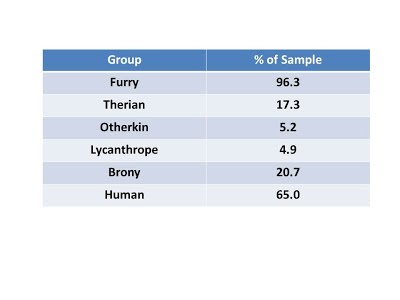
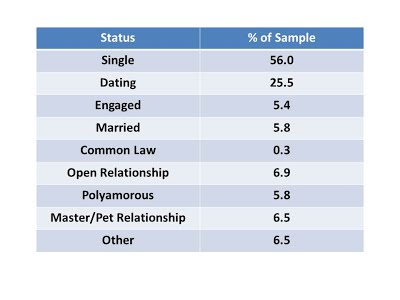
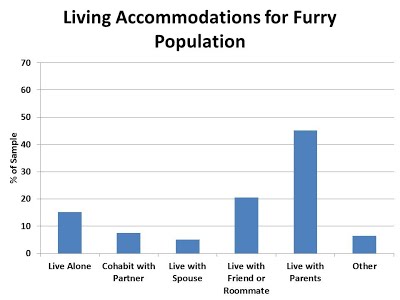
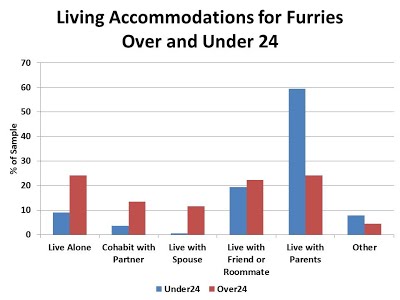
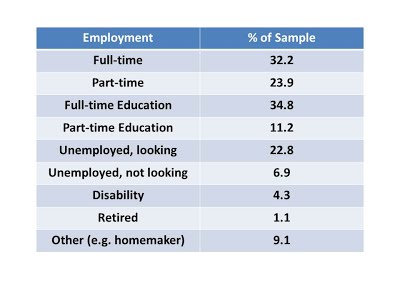
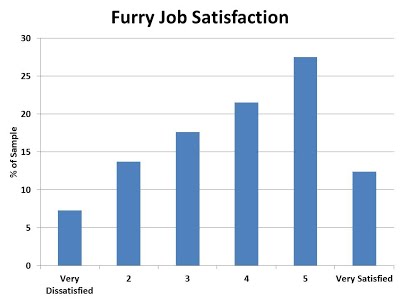
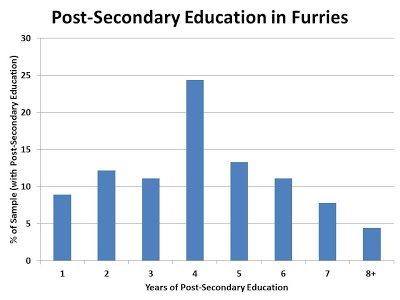
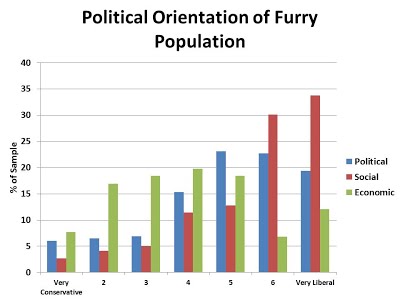
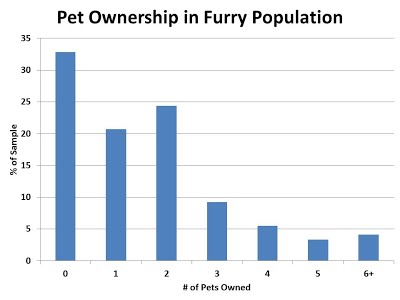
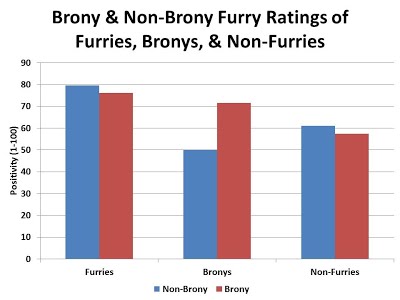
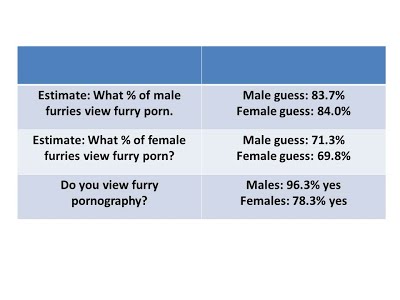
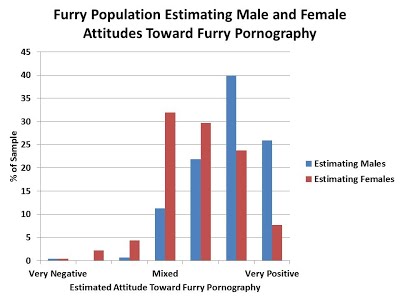
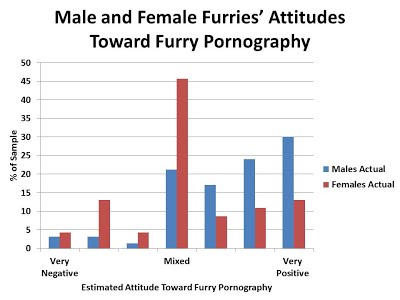
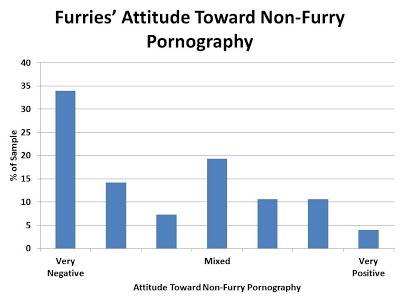

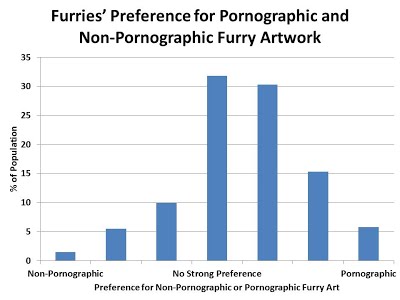

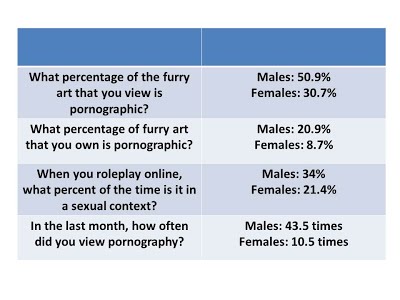
Recent Comments